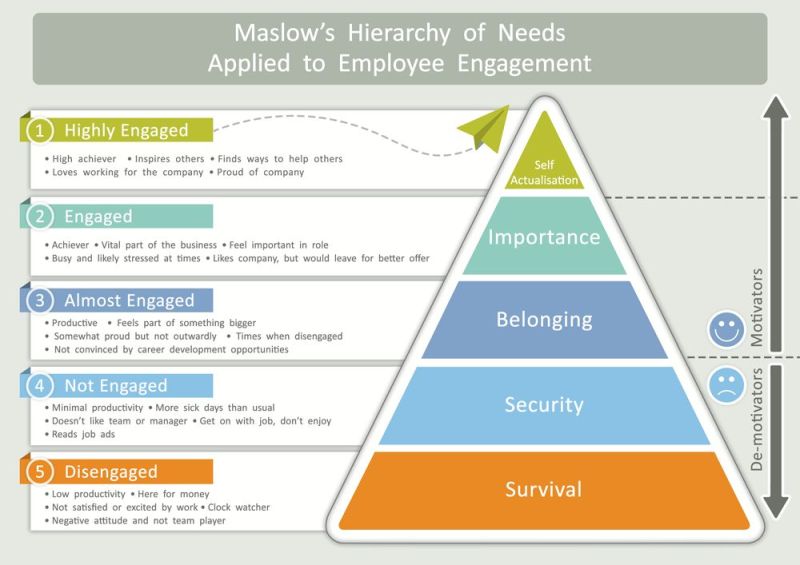In 1943, American psychologist Abraham Maslow proposed that healthy human beings have a hierarchy of needs as a part of his Theory of Human Motivation.

This hierarchy has since been used to help employers better understand the satisfaction and motivation levels of their workforces.
The theory is that human motivation is the result of the fulfillment of 5 basic needs:
📌 Physical
📌 Safety and security
📌 Positive social interactions
📌 Self-esteem and accomplishment
📌 Self-actualisation
Depending on where your employees fall, they could be considered motivators or de-motivators. The de-motivators fall within the bottom two levels of the hierarchy and the motivators the top three. They can be described as follows:
✅ Level 1 – Survival
Employees at this level are working for a paycheck and nothing more. They need the job to survive and pay the bills but they are demotivated and disengaged from the organisation. They are likely to do the bare minimum and have relatively low levels of productivity.
✅ Level 2 – Safety
These employees feel fulfilled by the security that comes with having a job, but aren’t motivated or engaged by their work. They don’t like working as a team and, as above, will likely be doing the minimum to get by. They aren’t bought into the business’s overall goals.
✅ Level 3 – Belonging
At this level, employees will be aware they are part of something bigger. They should feel part of a team and understand that their contributions are valued. Although they could be tempted to move elsewhere, they are almost engaged and feel some level of pride in the work they do.
✅ Level 4 – Importance
Employees within this level are engaged. They understand they have an important part to play within their team, projects and the organization more widely. Although they could be tempted if a much better role came along, they are achievers and know they play a vital role in the business.
✅ Level 5 – Self-actualisation
These employees feel engaged, motivated and ambitious. They make the most of all learning and development opportunities and actively seek ways of doing more and helping others. They are reaching their full potential and inspiring others in the team.
It’s important to note that an employee’s status as a motivator or demotivator has implications that reach further than their productivity alone. The level of motivation they are functioning at can impact the other people they work around.

 Follow
Follow